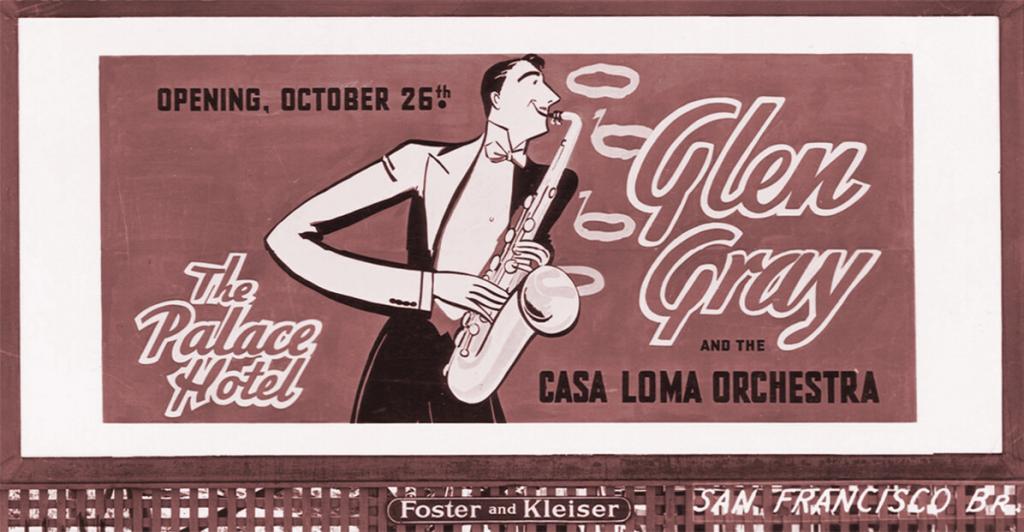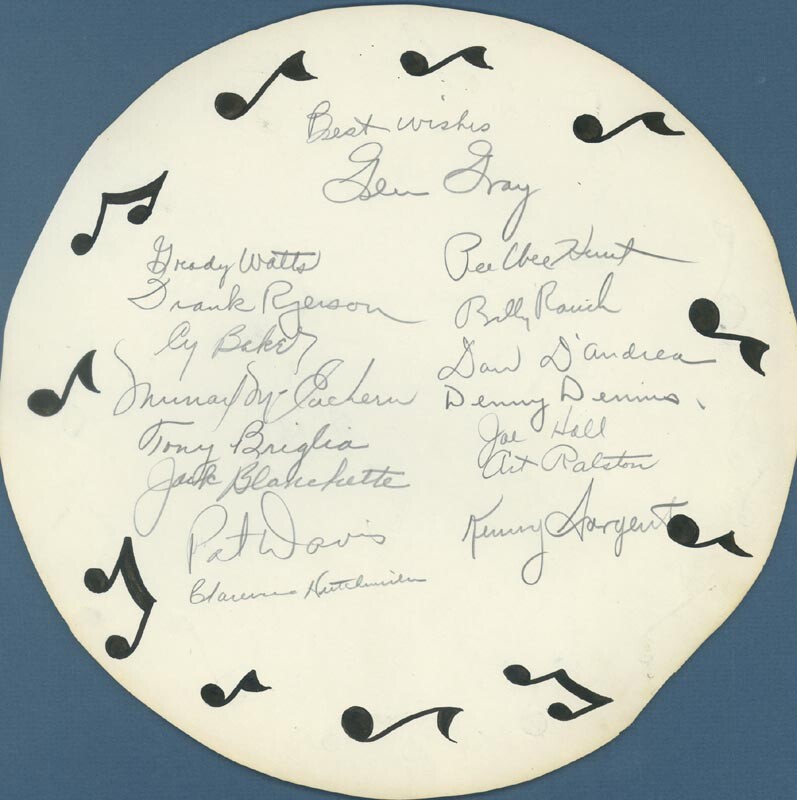At the outset of the Swing era, Casa Loma Orchestra set the highest standards for superb musicianship, arranging, presentation, sweet ballads and hard-driving dance rhythms. Feared by its competitors, it was a rich source of original tunes and reported to be one of the most danceable orchestras of all time. Before the rise of Benny Goodman, it was the premier Swing orchestra playing hot jazz, sweet tunes, riff-based head arrangements and fully written scores.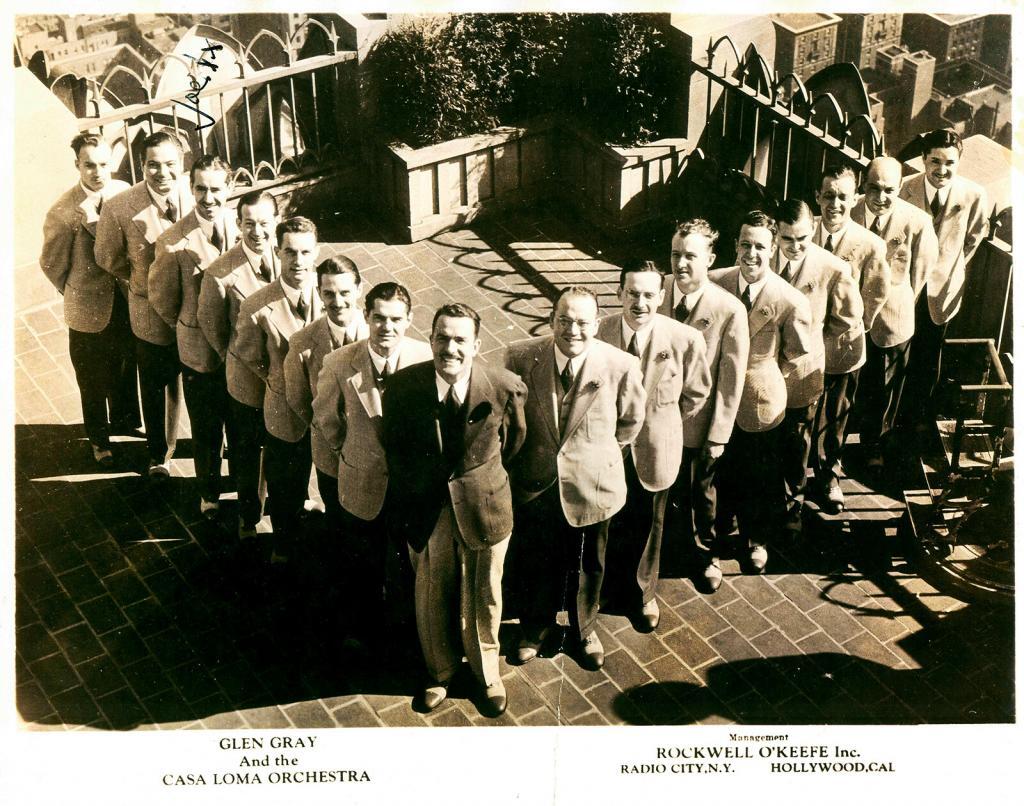
Casa Loma waxed more than 450 sides, cutting records for OKeh, Brunswick, Victor and Decca Record Companies or their subsidiaries and international affiliates. It was unusual for being an orchestra of white musicians who successfully competed with the black Jazz orchestras of Harlem for sheer drive and heat. Coleman Hawkins’ biographer John Chilton said that Hawk gave it serious attention, calling Casa Loma “my favorite band.” Yet it was popular with mainstream audiences for sweet and romantic music and toured coast-to-coast appearing dressed elegantly in tuxedos.
CASA LOMA Clip 1 – Introducing Casa Loma, Swing Low, Maniacs Ball, Limehouse Blues
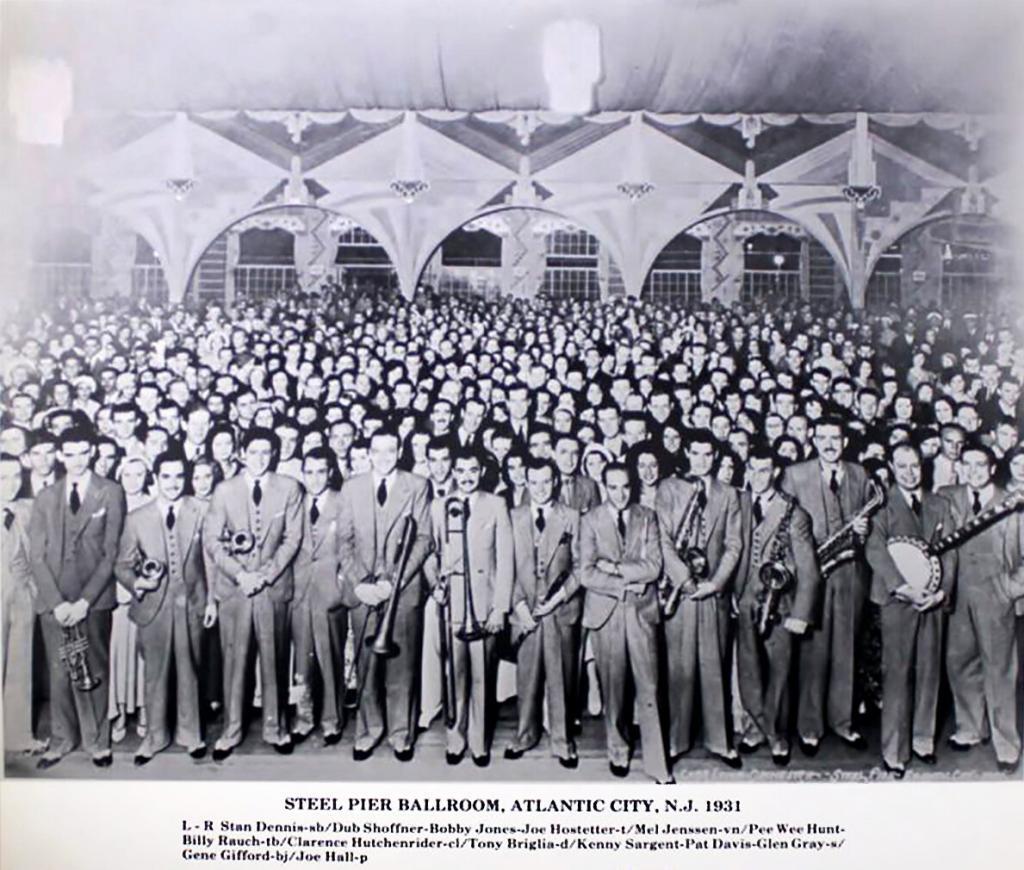
A Popular Dance Orchestra, 1929-47
In his landmark book, Lost Chords: White Musicians and their Contribution to Jazz, 1915-1945 (Oxford, 1999), noted jazz writer, researcher and musician Richard Sudhalter (1938-2008) concludes that: “No band of those years was more frequently discussed, more widely admired or emulated . . . no other band of the day, whatever race, could rival it for popularity, precision and team spirit, or for the ability to bring dancers to the floor.”
Its brilliant style and extraordinary esprit de corps solidified in the worst days of the Great Depression in 1931-33 during 101 consecutive weeks of one-night stands. They flourished despite the rough and tumble of touring, bad roads, blizzards and a bizarre incident in which the entire band was arrested in Kentucky on suspicion of bank robbery.
Dominating the dance band field for the first half of the 1930s, it was the topic of heated debates in the popular music press, Down Beat and Metronome magazines. It was a prolific source of original music, particularly from the deft pen of Gene Gifford who wrote their early hits. Casa Loma Orchestra performed on the first network radio broadcast of the foremost Swing music program, Camel Caravan in December 1933, sustaining until June 1936, shaping the newly emerging sounds and techniques that would define Popular music for decades.
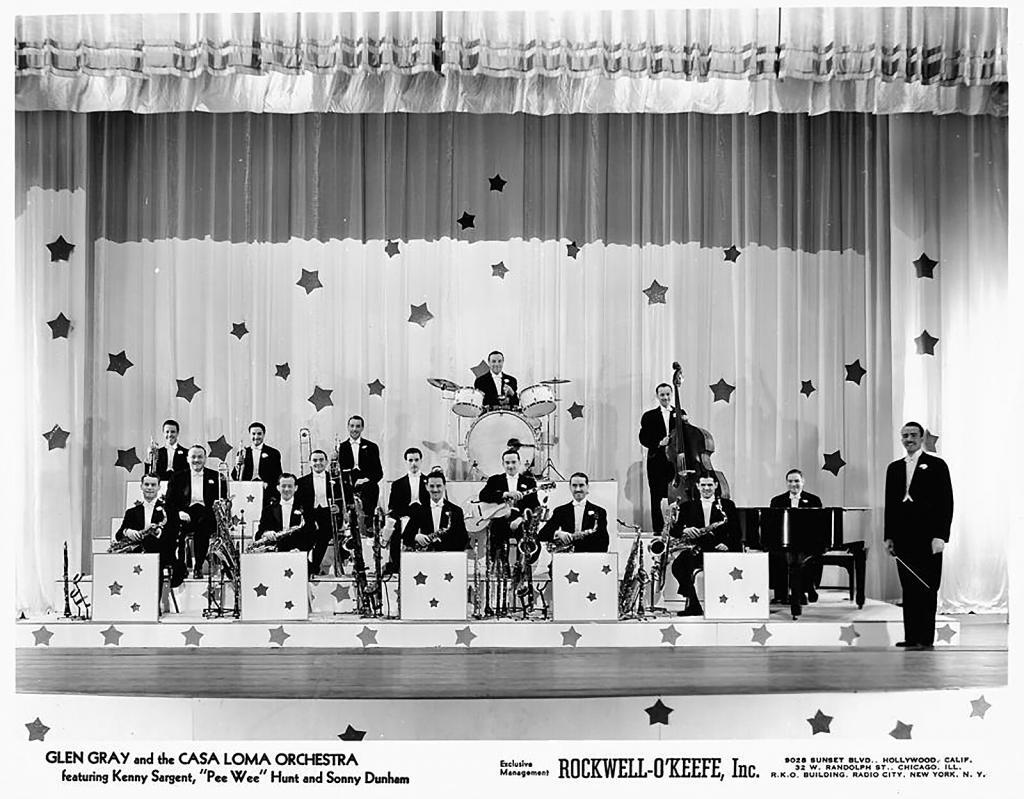
‘Reeked with Class’
“This orchestra reeked with class . . . both crisp and precise” wrote contemporary observer George Piersol who became the band historian. He recalled his first impression of Casa Loma in 1933 (Sudhalter, Lost Chords):
“. . . the band programmed each set with versatility. They mixed such sentimental ballads as Kenny Sargent crooning ‘I Love You Truly,’ which brought squeals of delight from the female contingent in the crowd, to ending the set with a rousing ‘killer diller’ such as ‘Maniac’s Ball.’ When the program ended, we all filed out of the Steel Pier convinced that ‘Casa Loma Stomp’ had become the collegiate national anthem!”
Future Casa Loma clarinetist Clarence Hutchenrider first heard the ensemble in its nascent form around 1929. He was impressed by their precise reading of intricately written charts and unity of sound, “it didn’t sound like any other band I’d ever heard . . . in a class by itself; something to remember.”
The distinctive Casa Loma style was shaped by gifted arranger Gene Gifford. He wrote both some of the hottest music of the 1930s and lushly romantic charts. Best known for scorching hot tunes Gifford had a remarkable talent for creating dreamy “tone paintings” and, suggests Sudhalter, “an even greater flair for ballads, drawing on a varied palette of instrumental colors.”
The Casa Loma radio theme song “Smoke Rings” typifies its romantic mood music. Incidentally, the sustained high-F by trombonist Billy Rauch in the coda became a standard by which trombone players of the day measured their skill. A rare vocal by Hutchenrider graces Hoagy Carmichael’s haunting and beautiful “New Orleans” waxed barely two weeks after its first recording by the Benny Moten Orchestra with Jimmy Rushing in December 1932.
New Orleans – 1932, vocal, Hutchenrider
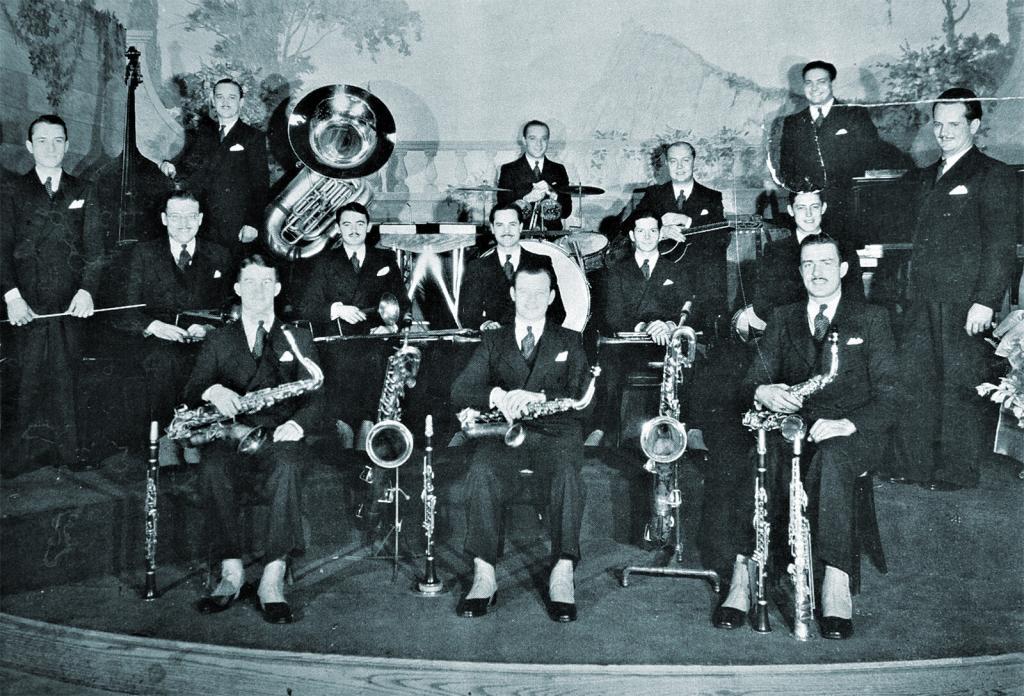
Origins
The orchestra emerged in 1929 from the remnants of The Orange Blossoms, one of several bands run by impresario Gene Goldkette out of his Detroit booking office. They had been scheduled to play a grand Toronto hotel called Casa Loma when it suddenly closed. It’s unclear to this day whether the band ever played the venue — if they performed for a few days or months or never appeared there at all — before the hotel failed as a commercial enterprise.
Stranded in Toronto, the musicians formed an independent, collectively run corporation under the Casa Loma banner. For years it was run as a co-operative business with the musicians having an active vote in the membership, management and finances. Maturing into a tough, finely-honed outfit, they were widely admired by their colleagues and competitors, white and black.
Its team spirit was strengthened by the fact that there were no big stars. Cornet player Grady Watts, quoted in Lost Chords, likened the early years to “a young football team with a bunch of rookies . . . blending together, enjoying each other’s company. Good friends. And nothing was too tough for us to do because we wanted to hold it together and make it a success.” One observer called it, “the band that’s organized like a corporation and run like a college fraternity.”
CASA LOMA Clip 2 – Hotel Origins, You Aint Been Livin’ Right, Who’s Sorry Now
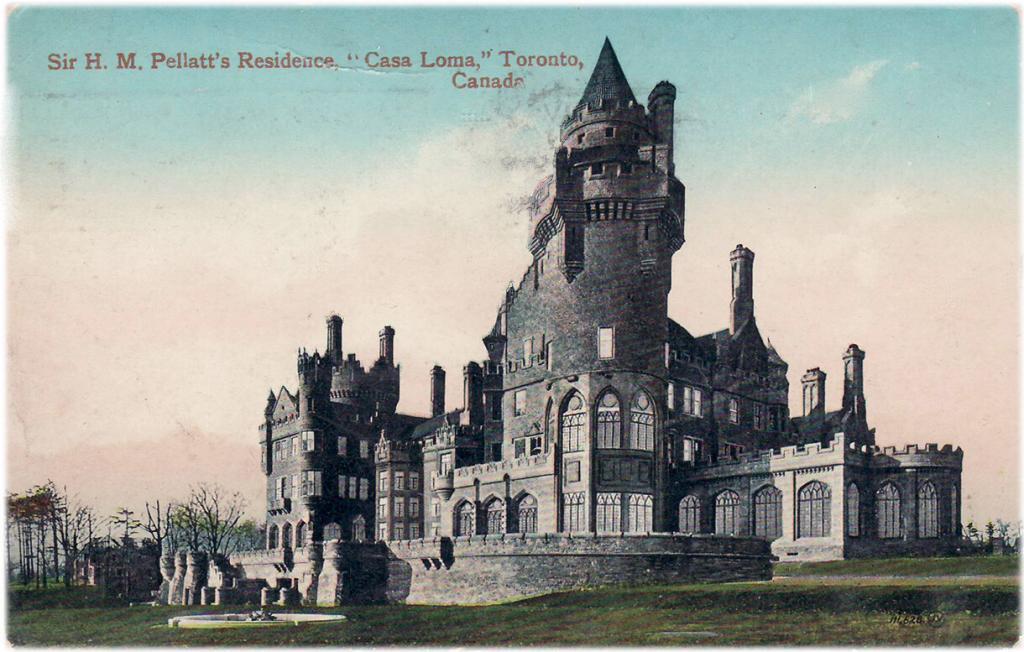
Casa Loma Castle
Casa Loma Castle in Toronto is a curious story, originally conceived and built by Sir Henry Pellatt. A Canadian industrial, real estate and insurance magnate, he spent five million dollars during 1911-14 constructing a medieval castle, with more than 100 rooms, 60 bathrooms, 5000 electric lights, its own telephone system, a shooting gallery and the largest wine cellar in North America. The sprawling gothic folly of gables, turrets and arches operated briefly as a hotel, but it’s been owned by the City of Toronto since 1930, remaining among its most spectacular tourist attractions.
CASA LOMA Clip 3 – Glen Gray, Truckin, Weary Blues
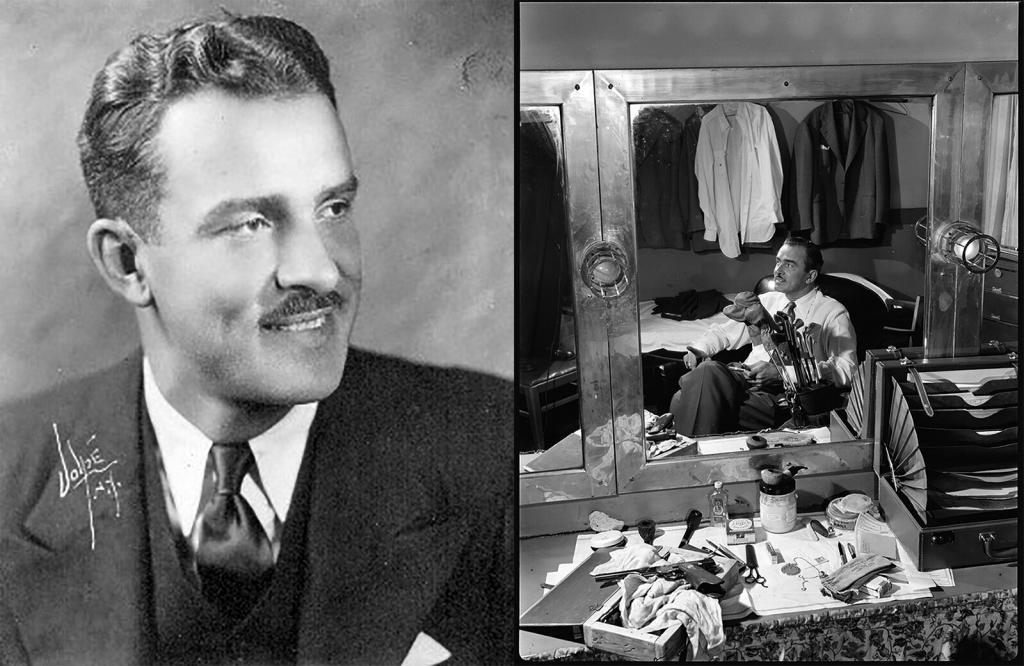
Glen Gray: Saxophone & Leader
Smart and personable, tall and handsome Glen Gray Knoblauch (1906-1963) directed the orchestra and played first-alto saxophone. Known to his fellow musicians as “Spike,” he’d previously worked in or fronted Goldkette bands. Knoblauch (the German word for garlic) has sometimes been incorrectly characterized as merely a conductor and front man, but this was not the case. Gray was a skilled and knowledgeable musician according to no less than arranger Spud Murphy.
A stabilizing influence with a good head for business, Gray was elected in 1933 to manage and front the band which was run thereafter as a more conventional business known as Glen Gray and the Casa Loma Orchestra. All of the ex-Casa Lomans spoke of their former leader and namesake with fondness and respect. After about 1949 Gray lent the Casa Loma name to numerous Hi-Fi recordings, which may have been very good musically and technically but bore little direct relation to the orchestra of the 1930s.
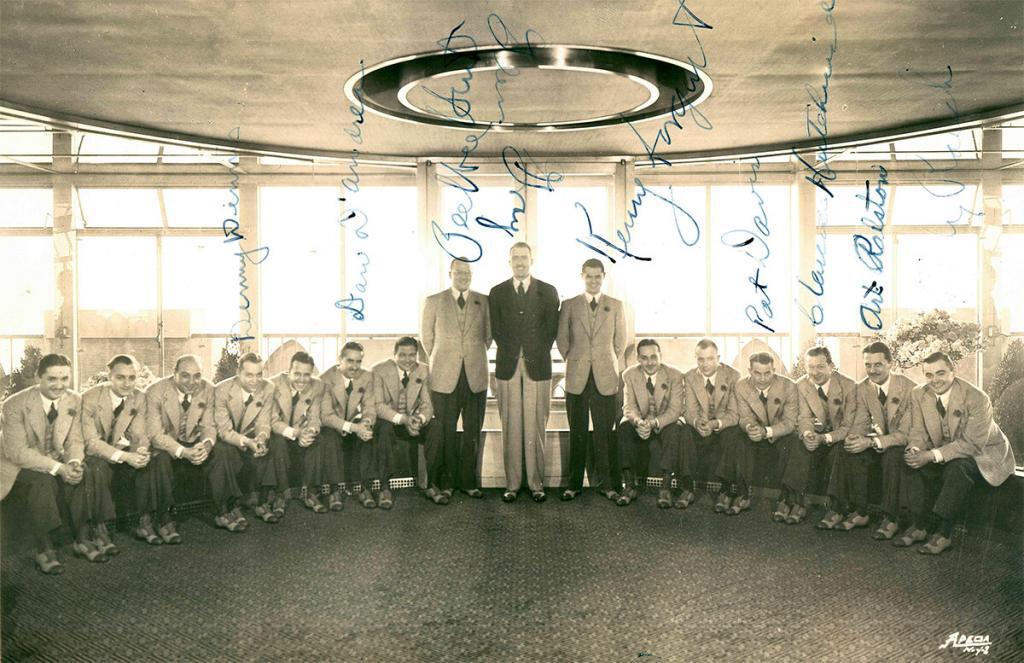
Gene Gifford and the Arrangers
The Casa Loma Orchestra swung with a terrific drive and precision. Much of its distinctive sound derived from the arranging of Gene Gifford (1908-1970) and his talented successors. It’s not fully appreciated how critical these composer/arrangers were to the growth and development of the Swing and Big Band form. He was among the coterie of talented scribes who mastered and excelled at the new and delicately interlocking challenges of organizing and focusing ten or more instruments in a hot dance orchestra.
Gifford was originally from Memphis where he had started his own band in high school. He had previously worked in precursor Goldkette bands and became one of the finest arrangers of his day. He composed hot music custom tailored for musicians who played it with spirit and brio. His innovative large ensemble Jazz and sumptuous tone paintings exposed audiences to greater complexity in popular music.
CASA LOMA 4 – Arranging, Buji, Chant of the Jungle
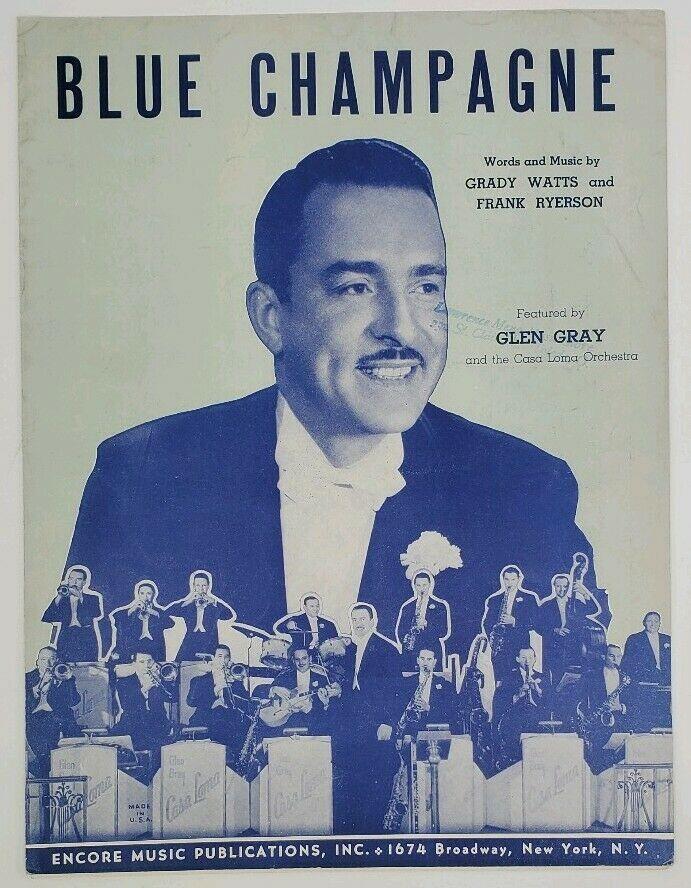 Gifford’s distinctive writing for brass and reed sections could at times sound almost like a dialog between soloists. His arrangements were quite popular and stock editions of his scores circulated widely. However, there was a downside to his writing, which could become stiff or veer into repetition.
Gifford’s distinctive writing for brass and reed sections could at times sound almost like a dialog between soloists. His arrangements were quite popular and stock editions of his scores circulated widely. However, there was a downside to his writing, which could become stiff or veer into repetition.
Before 1933, Gifford was a guitar player and banjo virtuoso. Curiously, his protracted disengagement from the orchestra lasted from 1934 to ‘39. His brilliant successors – Spud Murphy, Larry Clinton, Larry Wagner and others — proceeded in a similar spirit. Though, over time Casa Loma gradually came to sound not dissimilar from its competitors.
Richard Sudhalter asserts that Gifford “developed a concept of ensemble writing almost mathematical in its order and balance . . . antiphonal blocs fused through call-and-response patterns into an ensemble sound.” His charts differed markedly from those of his contemporaries, Fletcher Henderson, Don Redman , Benny Carter and Bill Challis. The most striking display of his writing talents may be the 1931-32 tune triptych, “White Jazz,” “Black Jazz,” “Blue Jazz.”
Commentary on White/Black/Blue Jazz by Dan Radlauer
For a deeper dive into these landmarks of early Swing I’ve asked Dan Radlauer, my brother who composes and arranges Big Band scores for comment:
“Overall, Casa Loma Orchestra play wonderfully together, and I feel like I can really hear them having fun. These examples have great energy and really show the technical skill of the band. This is also a reflection of good writing and arranging. Don’t confuse the players, just let them have fun! If they like it and have fun, they bring their best stuff, and the audience will feel it and enjoy it too. The band, the composition and the arrangements show this philosophy in spades.
On White Jazz, the band is playing the 1/8th notes very “straight,” not unusual at this tempo. Even on a full on “Swing tune” at this tempo the 1/8th notes tend to “straighten” up. But “White Jazz” shows how well they can execute this tempo.
They go from a minor key into a major key at around :52 seconds. It gives the arrangement a great lift! This transition between the opening in a minor key, then modulation to a major key seems to be a hook for them. Finally, they go full ensemble, really great stuff, bending notes together, executing tight rhythms. This is one well-rehearsed band!
Black Jazz has a very interesting opening where the ensemble is the rhythm section more than the actual Rhythm section. I love the conversation between the saxophones and brass. Again, this fast tempo forces the “swing 1/8ths” to straighten up.
Each solo has a different orchestration behind it. Sometimes rhythmic, sometimes “footballs,” meaning whole notes that last a measure or even two at this tempo. A wonderful bookend of the intro ends with a “ritard” where the tempo slows down.
Blue Jazz is a great vehicle for the outstanding trombone soloists. I love how the song starts out in a minor key, very ‘Mysterioso,” then it switches to a major key, almost mocking that happy feeling. Then a quirky transition to a great couple of solos.
Staying in the major key, there is another wonderful brass ‘soli’ (where they all play the same rhythm pretty much). In the clarinet solo, the drummer mixes it up quite a bit, playing the rims of his drums. Great color to break up the overall sound.”
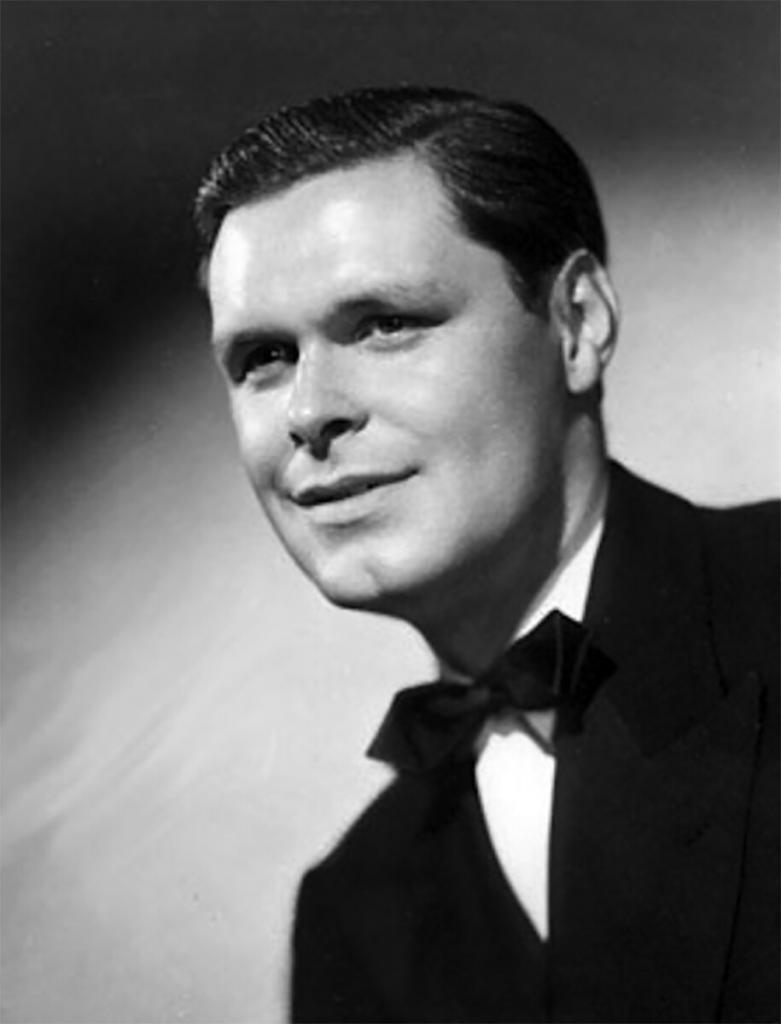
Arranger Spud Murphy
When I interviewed Murphy, he proudly declaimed himself “the only guy that ever worked for the two best bands in the world at the same time. Because Casa Loma was the best and Goodman was on his way up. And while I was writing for the two, Goodman passed Casa Loma.”
Lyle “Spud” Murphy (Miko Stephanovic, 1908 – 2005) was a gifted composer of some 100 tunes, writing 600 arrangements for the top Swing orchestras like Bunny Berigan, Bob Crosby and Benny Goodman. Keenly grasping the methods of his famed predecessor, Murphy arranged for Glen Gray and the Casa Loma Orchestra from 1935 to ’37 producing some 75 scores.
Spud was buddies with both Glen Gray and clarinetist Hutchenrider and performed with Casa Loma in the early years but didn’t play on the recordings. He recalled his old pals in a lively 2003 interview (further explored in a forthcoming profile).
CASA LOMA Clip 5 – Spud Murphy Recalls Casa Loma
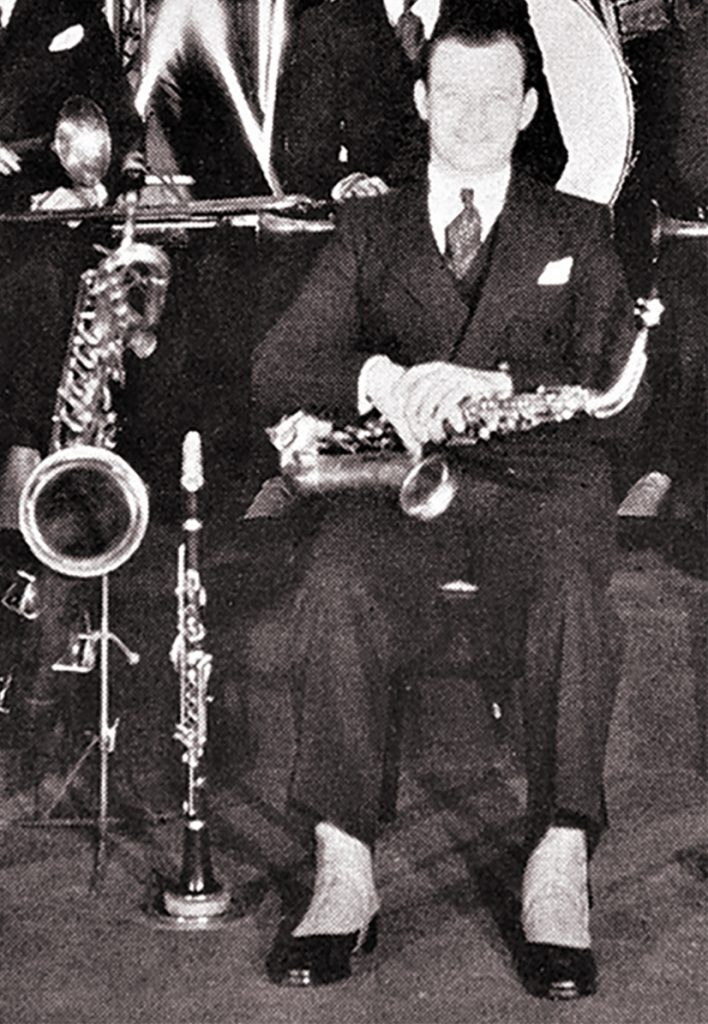
Clarence Hutchenrider: Clarinet & Saxophone
Nearly completely forgotten today, the clarinet and saxophone player, Clarence Hutchenrider (1908-1991) was the closest thing to a star soloist in the orchestra. While he might have lacked the intense brilliance of Benny Goodman or superlative virtuosity of Artie Shaw he forged a pioneering Swing clarinet style years before their emergence.
Sudhalter asserts that Clarence took a dominant role in the band from the start with his “punchy and agitated . . . peppery attack.” Yet he could sound elegant. A founding member who stayed until 1943, he’s brilliant on Casa Loma’s most accomplished discs.
Hutchenrider hailed from Waco, Texas, earning his bones barnstorming the Southwestern territory in the band of Jack and Charlie Teagarden. He had a varied career after Casa Loma playing mostly around New York City.
During the 1970s and ‘80s, he performed with his own Gully Low Band and the ensembles of Vince Giordano or cornetist Richard Sudhalter, who quotes his friend Clarence: “The band strove for perfection . . . We worked hard at it. For myself, I liked the ballads better than the flag-wavers. But it was all very influential. Everybody was copying what we were doing.”
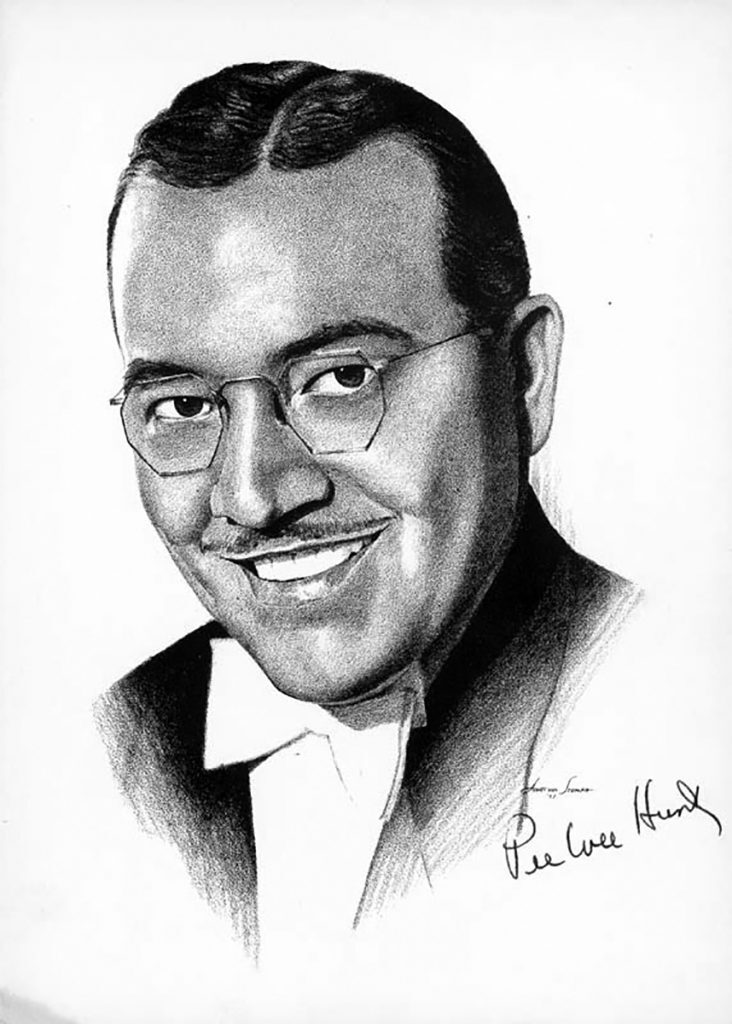
Pee Wee Hunt: Trombone & Vocals
The distinctive trombone licks and singing of Pee Wee Hunt (1907-1979) were part of Casa Loma’s signature sound. His raucous trombone lines brought rolling waves of Jazz rhythm, tone and swagger. Hunt modeled his singing on Jack Teagarden and to some extent his trombone style, which meant that he was a Caucasian musician who sounded African American, like Teagarden.
A founding member who had worked in precursor bands, Pee Wee remained until May 1943. Running a sextet after World War Two, his cornball Dixieland rendition of “Twelfth Street Rag” was a big hit in 1948.
The Lady from St. Paul – Pee Wee Hunt, 1932
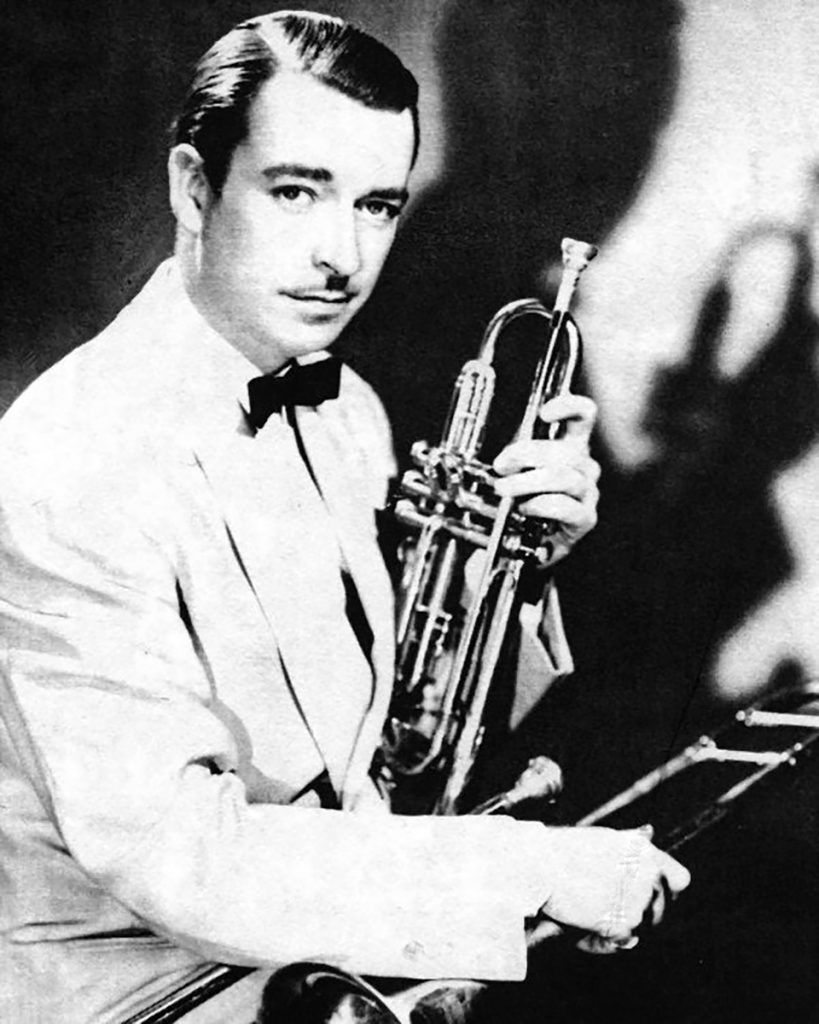
Sonny Dunham: Trombone & Trumpet
Massachusetts-born brass player Sonny Dunham (1914-1990) began on valve trombone. A child prodigy, he was a professional musician by the age of thirteen. Featured on numerous Casa Loma hits, he played mostly trumpet (1932-39) in a manner distinctly influenced by Bunny Berigan. Durham left to launch a band of his own, performing on both coasts, making short “Soundie” films and sustaining a movie career into the 1960s.
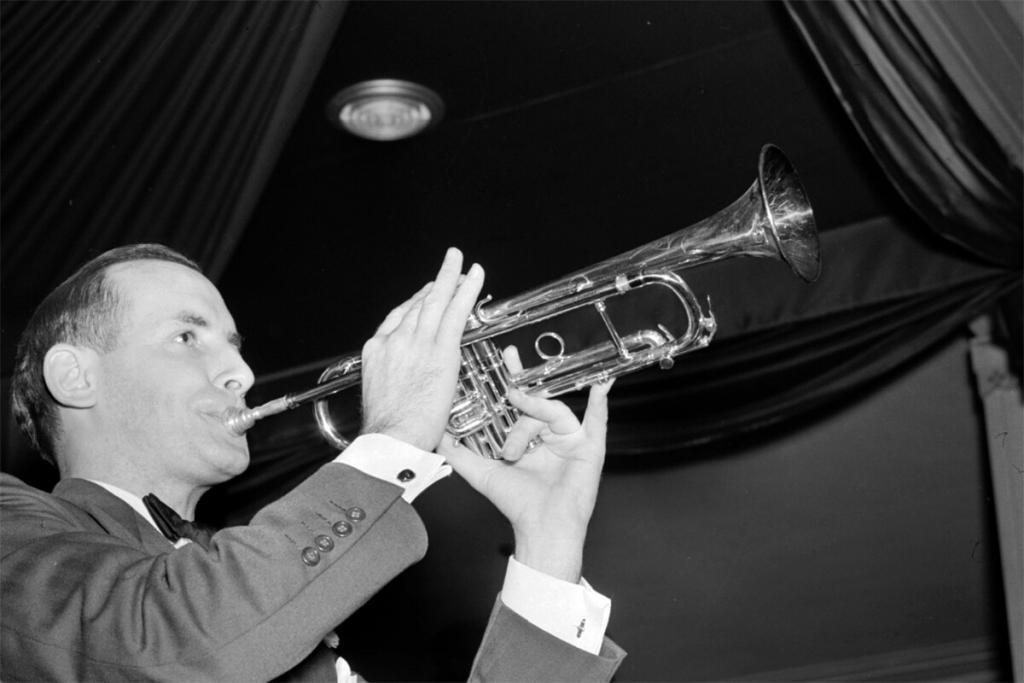
Larry Clinton: Trumpet & Arranger
Talented songwriter and arranger Larry Clinton (1909-1985) was a brought into the orchestra during 1936-37. The gifted Clinton did stints with composer Ferde Grofe, pianist and bandleader Claude Hopkins, Louis Armstrong and Bunny Berigan. A Tommy Dorsey protégé, he worked for the Dorsey Brothers (1934), Jimmy Dorsey (1935-36) and Tommy Dorsey (1937).
Clinton composed and arranged several Casa Loma hits including “A Study in Brown,” “Shades of Hades,” “Zig Zag” and his “Whoa Babe” was sung by Pee Wee Hunt in 1937. But he too soon departed to form his own orchestra, becoming noteworthy for Swing transcriptions of Debussy and Tchaikovsky.
CASA LOMA Clip 6 – Larry Clinton, Whoa Babe
Singers
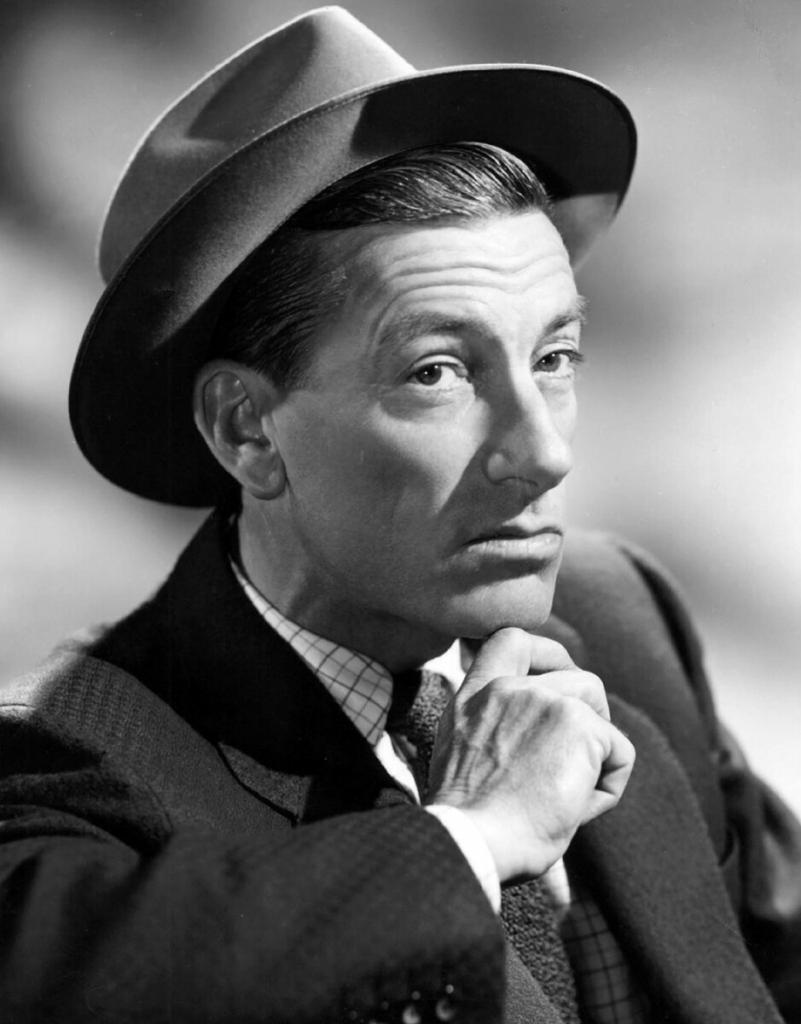
Widespread success obliged Casa Loma Orchestra to offer vocalists, which in the early days were usually guys in the band. Alto saxophonist Kenny Sargent sang romantic baritone and Pee Wee Hunt was a popular vocalist with a great style. By the mid-1930s, they were often joined on records and radio by high-profile singers and celebrities like Connee Boswell, Mildred Bailey, Lee Wiley, composer Hoagy Carmichael and superstar Louis Armstrong.
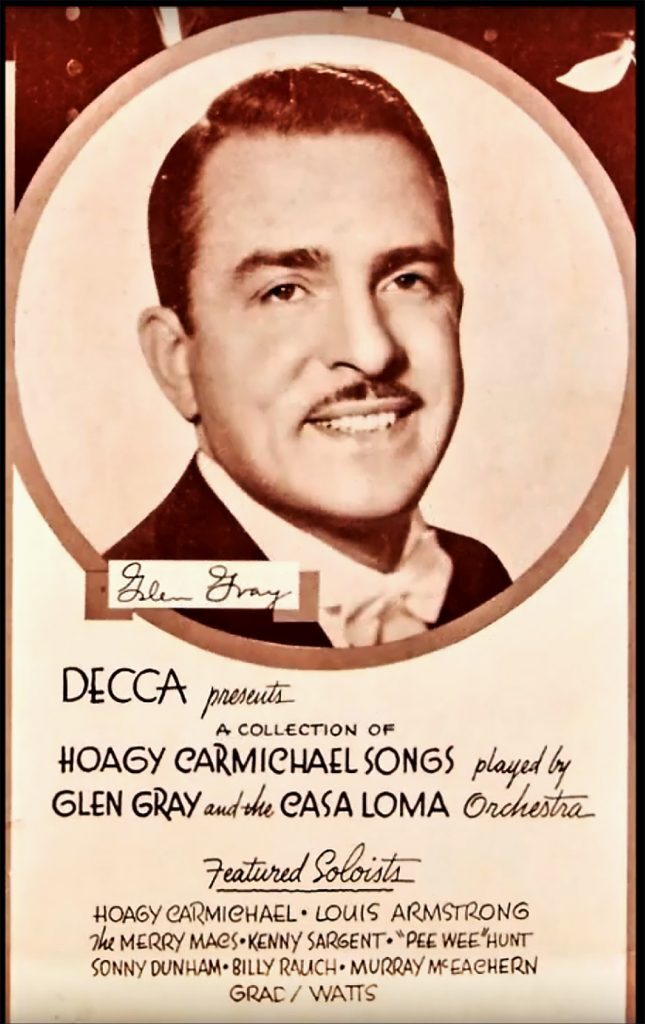
The Hoagy Carmichael Album, 1939
Composer, piano player, singer and actor Hoagland “Hoagy” Carmichael (1899-1981) was signed to Decca Records. Casa Loma had already waxed some of his tunes for Decca and were invited to record a collection of his songs in collaboration with the composer. Though only a middling success, the resulting multi-disc 78-rpm ‘record album’ produced fine music.
Casa Loma recordings of Carmichael’s “Rockin’ Chair” and “Lazybones” set templates for the songs; with Satchmo, Pee Wee sang vocal parts that were soon taken up by Jack Teagarden performing with Armstrong. “Georgia on my Mind” features trumpeter Sonny Dunham and alto saxophonist Murray McEachern.
CASA LOMA Clip 7 – Hoagy Carmichael Georgia, Boneyard Shuffle, Riverboat Shuffle
No Name Jive, 1940
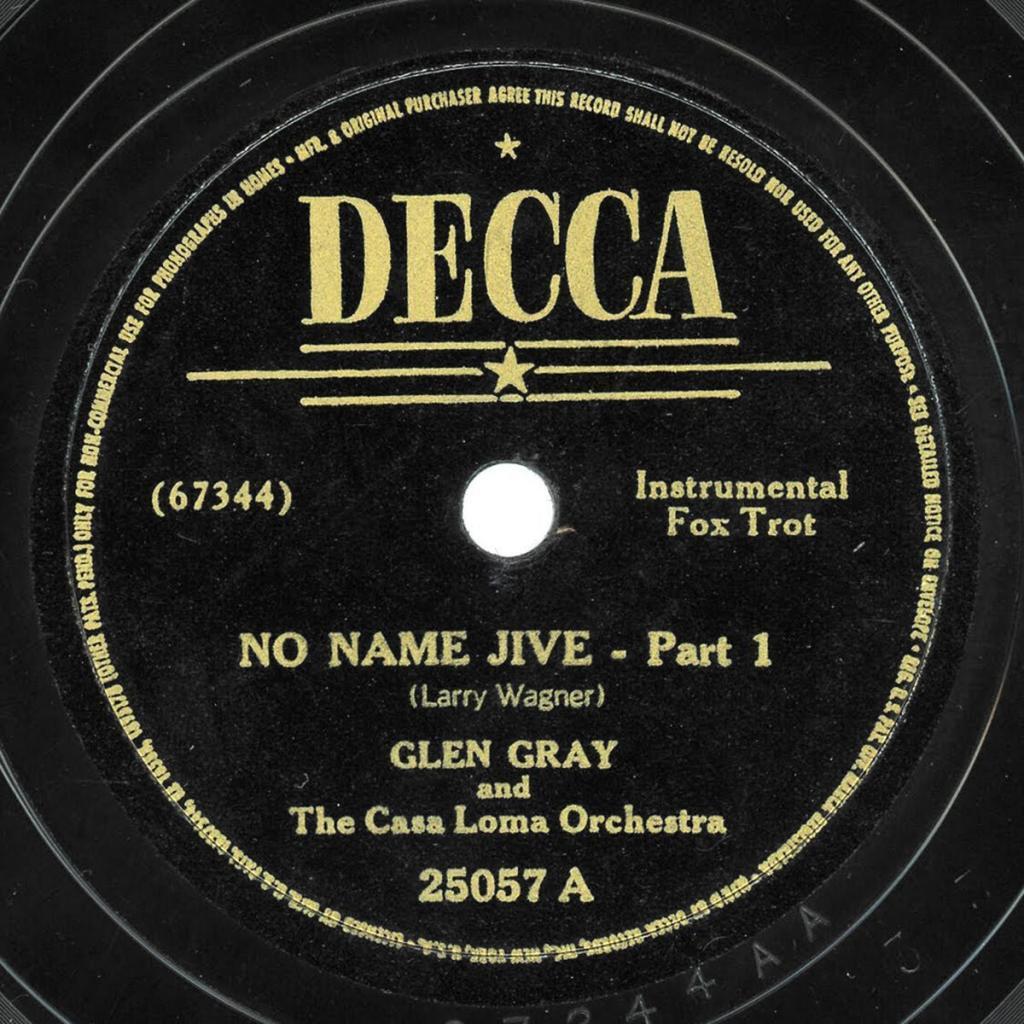 A blues-based riff tune by Larry Wagner “No Name Jive” was issued on two sides of a 78-rpm disc and a major hit, reviving Casa Loma’s flagging popularity. It features horn soloist Grady Watts (1908-1986) who was there for a decade and second only to Sonny Dunham. He’s highlighted with trumpeter Cy Baker and Murray McEachern on alto saxophone while Hutchenrider plays clarinet and a borrowed tenor sax.
A blues-based riff tune by Larry Wagner “No Name Jive” was issued on two sides of a 78-rpm disc and a major hit, reviving Casa Loma’s flagging popularity. It features horn soloist Grady Watts (1908-1986) who was there for a decade and second only to Sonny Dunham. He’s highlighted with trumpeter Cy Baker and Murray McEachern on alto saxophone while Hutchenrider plays clarinet and a borrowed tenor sax.
CASA LOMA Clip 8 – Conclusion, No Name Jive, Pts. 1 & 2
A Vanguard of Swing
Casa Loma’s greatness lay in several distinctive characteristics. The arranging techniques of Gene Gifford and his successors developed unique solutions for building an effective Swing ensemble from a dozen or more pieces. The collective band structure of the early years empowered the members, solidifying an extraordinary precision and cohesion. Its polished and varied presentation of hot dance music, mainstream hits and dreamy mood music had broad appeal in performance and on radio, records or sheet music.
Contemporary observers suggested that the recordings of Casa Loma Orchestra failed to capture the dynamism, rich layering of sound, excitement and glamour of their actual performances. It was one of the few bands feared and admired by its Harlem colleagues and competitors. And though eclipsed by Benny Goodman after 1936, it adapted successfully to the shifting winds of style for another decade.
A singular entity, Glen Gray and the Casa Loma Orchestra played a key role in the development of popular dance music, setting the highest standards on a broad spectrum from sweet ballads to ensemble jazz. Blazing a pioneering path, Casa Loma nurtured, dominated and shaped the early years of Swing.
This article is based on these radio programs, also found at the Jazz Rhythm Casa Loma page.
Swingin’ with Casa Loma – Part 1A
Swingin’ with Casa Loma – Part 1B
Swingin’ with Casa Loma – Part 2A
Swingin’ with Casa Loma – Part 2B
Sources and Bibliography:
Author interview with Spud Murphy, Los Angeles 2003
Jazz Records: 1897-1942 [discography], Brian Rust (Arlington House, 1978)
Lost Chords: White Musicians and Their Contribution to Jazz 1915-1945, Richard Sudhalter (Oxford University Press, 1999)
The New Grove Dictionary of Jazz (St. Martin’s Press, 1988)
Big Band Library.com www.bigbandlibrary.com/glengray
Thanks to Dan Radlauer for expert commentary.
Dave Radlauer is a six-time award-winning radio broadcaster presenting early Jazz since 1982. His vast JAZZ RHYTHM website is a compendium of early jazz history and photos with some 500 hours of exclusive music, broadcasts, interviews and audio rarities.
Radlauer is focused on telling the story of San Francisco Bay Area Revival Jazz. Preserving the memory of local legends, he is compiling, digitizing, interpreting and publishing their personal libraries of music, images, papers and ephemera to be conserved in the Dave Radlauer Jazz Collection at the Stanford University Library archives.




